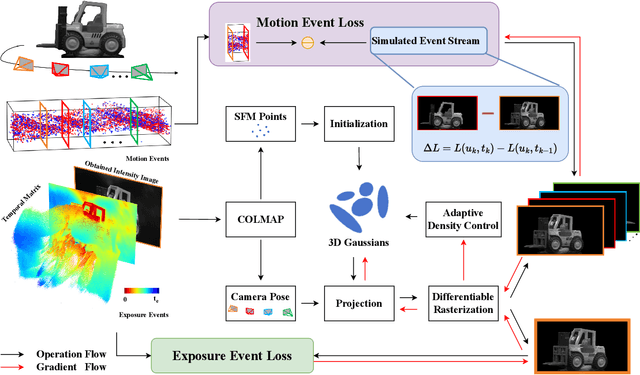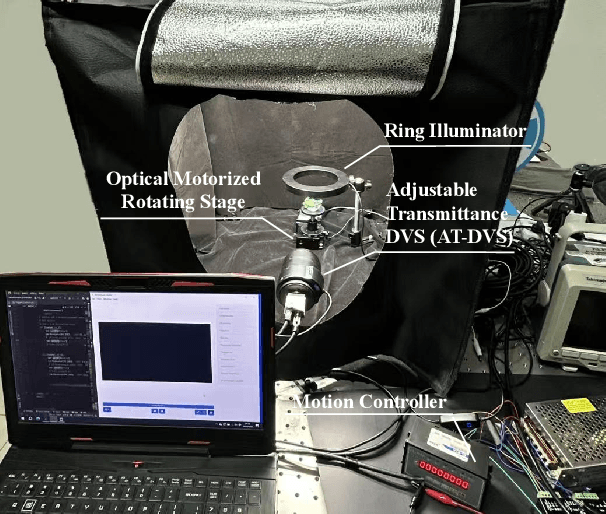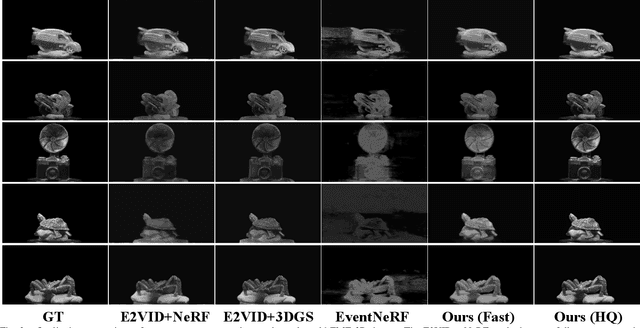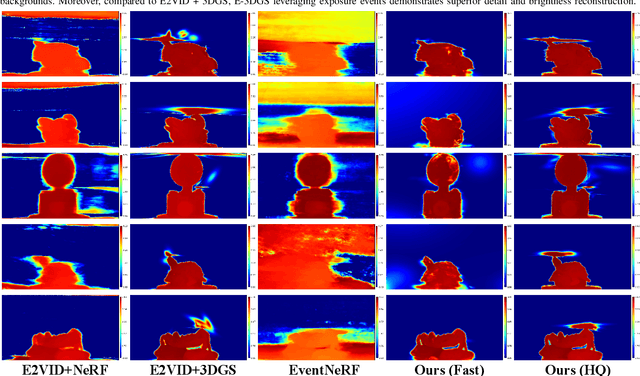Zhenshan Bing
DORA: Object Affordance-Guided Reinforcement Learning for Dexterous Robotic Manipulation
May 20, 2025Abstract:Dexterous robotic manipulation remains a longstanding challenge in robotics due to the high dimensionality of control spaces and the semantic complexity of object interaction. In this paper, we propose an object affordance-guided reinforcement learning framework that enables a multi-fingered robotic hand to learn human-like manipulation strategies more efficiently. By leveraging object affordance maps, our approach generates semantically meaningful grasp pose candidates that serve as both policy constraints and priors during training. We introduce a voting-based grasp classification mechanism to ensure functional alignment between grasp configurations and object affordance regions. Furthermore, we incorporate these constraints into a generalizable RL pipeline and design a reward function that unifies affordance-awareness with task-specific objectives. Experimental results across three manipulation tasks - cube grasping, jug grasping and lifting, and hammer use - demonstrate that our affordance-guided approach improves task success rates by an average of 15.4% compared to baselines. These findings highlight the critical role of object affordance priors in enhancing sample efficiency and learning generalizable, semantically grounded manipulation policies. For more details, please visit our project website https://sites.google.com/view/dora-manip.
Pretrained Bayesian Non-parametric Knowledge Prior in Robotic Long-Horizon Reinforcement Learning
Mar 27, 2025Abstract:Reinforcement learning (RL) methods typically learn new tasks from scratch, often disregarding prior knowledge that could accelerate the learning process. While some methods incorporate previously learned skills, they usually rely on a fixed structure, such as a single Gaussian distribution, to define skill priors. This rigid assumption can restrict the diversity and flexibility of skills, particularly in complex, long-horizon tasks. In this work, we introduce a method that models potential primitive skill motions as having non-parametric properties with an unknown number of underlying features. We utilize a Bayesian non-parametric model, specifically Dirichlet Process Mixtures, enhanced with birth and merge heuristics, to pre-train a skill prior that effectively captures the diverse nature of skills. Additionally, the learned skills are explicitly trackable within the prior space, enhancing interpretability and control. By integrating this flexible skill prior into an RL framework, our approach surpasses existing methods in long-horizon manipulation tasks, enabling more efficient skill transfer and task success in complex environments. Our findings show that a richer, non-parametric representation of skill priors significantly improves both the learning and execution of challenging robotic tasks. All data, code, and videos are available at https://ghiara.github.io/HELIOS/.
Data-Agnostic Robotic Long-Horizon Manipulation with Vision-Language-Guided Closed-Loop Feedback
Mar 27, 2025Abstract:Recent advances in language-conditioned robotic manipulation have leveraged imitation and reinforcement learning to enable robots to execute tasks from human commands. However, these methods often suffer from limited generalization, adaptability, and the lack of large-scale specialized datasets, unlike data-rich domains such as computer vision, making long-horizon task execution challenging. To address these gaps, we introduce DAHLIA, a data-agnostic framework for language-conditioned long-horizon robotic manipulation, leveraging large language models (LLMs) for real-time task planning and execution. DAHLIA employs a dual-tunnel architecture, where an LLM-powered planner collaborates with co-planners to decompose tasks and generate executable plans, while a reporter LLM provides closed-loop feedback, enabling adaptive re-planning and ensuring task recovery from potential failures. Moreover, DAHLIA integrates chain-of-thought (CoT) in task reasoning and temporal abstraction for efficient action execution, enhancing traceability and robustness. Our framework demonstrates state-of-the-art performance across diverse long-horizon tasks, achieving strong generalization in both simulated and real-world scenarios. Videos and code are available at https://ghiara.github.io/DAHLIA/.
SharedAssembly: A Data Collection Approach via Shared Tele-Assembly
Mar 15, 2025Abstract:Assembly is a fundamental skill for robots in both modern manufacturing and service robotics. Existing datasets aim to address the data bottleneck in training general-purpose robot models, falling short of capturing contact-rich assembly tasks. To bridge this gap, we introduce SharedAssembly, a novel bilateral teleoperation approach with shared autonomy for scalable assembly execution and data collection. User studies demonstrate that the proposed approach enhances both success rates and efficiency, achieving a 97.0% success rate across various sub-millimeter-level assembly tasks. Notably, novice and intermediate users achieve performance comparable to experts using baseline teleoperation methods, significantly enhancing large-scale data collection.
Pick-and-place Manipulation Across Grippers Without Retraining: A Learning-optimization Diffusion Policy Approach
Feb 21, 2025Abstract:Current robotic pick-and-place policies typically require consistent gripper configurations across training and inference. This constraint imposes high retraining or fine-tuning costs, especially for imitation learning-based approaches, when adapting to new end-effectors. To mitigate this issue, we present a diffusion-based policy with a hybrid learning-optimization framework, enabling zero-shot adaptation to novel grippers without additional data collection for retraining policy. During training, the policy learns manipulation primitives from demonstrations collected using a base gripper. At inference, a diffusion-based optimization strategy dynamically enforces kinematic and safety constraints, ensuring that generated trajectories align with the physical properties of unseen grippers. This is achieved through a constrained denoising procedure that adapts trajectories to gripper-specific parameters (e.g., tool-center-point offsets, jaw widths) while preserving collision avoidance and task feasibility. We validate our method on a Franka Panda robot across six gripper configurations, including 3D-printed fingertips, flexible silicone gripper, and Robotiq 2F-85 gripper. Our approach achieves a 93.3% average task success rate across grippers (vs. 23.3-26.7% for diffusion policy baselines), supporting tool-center-point variations of 16-23.5 cm and jaw widths of 7.5-11.5 cm. The results demonstrate that constrained diffusion enables robust cross-gripper manipulation while maintaining the sample efficiency of imitation learning, eliminating the need for gripper-specific retraining. Video and code are available at https://github.com/yaoxt3/GADP.
Learning Monocular Depth from Events via Egomotion Compensation
Dec 26, 2024Abstract:Event cameras are neuromorphically inspired sensors that sparsely and asynchronously report brightness changes. Their unique characteristics of high temporal resolution, high dynamic range, and low power consumption make them well-suited for addressing challenges in monocular depth estimation (e.g., high-speed or low-lighting conditions). However, current existing methods primarily treat event streams as black-box learning systems without incorporating prior physical principles, thus becoming over-parameterized and failing to fully exploit the rich temporal information inherent in event camera data. To address this limitation, we incorporate physical motion principles to propose an interpretable monocular depth estimation framework, where the likelihood of various depth hypotheses is explicitly determined by the effect of motion compensation. To achieve this, we propose a Focus Cost Discrimination (FCD) module that measures the clarity of edges as an essential indicator of focus level and integrates spatial surroundings to facilitate cost estimation. Furthermore, we analyze the noise patterns within our framework and improve it with the newly introduced Inter-Hypotheses Cost Aggregation (IHCA) module, where the cost volume is refined through cost trend prediction and multi-scale cost consistency constraints. Extensive experiments on real-world and synthetic datasets demonstrate that our proposed framework outperforms cutting-edge methods by up to 10\% in terms of the absolute relative error metric, revealing superior performance in predicting accuracy.
Gassidy: Gaussian Splatting SLAM in Dynamic Environments
Nov 23, 2024Abstract:3D Gaussian Splatting (3DGS) allows flexible adjustments to scene representation, enabling continuous optimization of scene quality during dense visual simultaneous localization and mapping (SLAM) in static environments. However, 3DGS faces challenges in handling environmental disturbances from dynamic objects with irregular movement, leading to degradation in both camera tracking accuracy and map reconstruction quality. To address this challenge, we develop an RGB-D dense SLAM which is called Gaussian Splatting SLAM in Dynamic Environments (Gassidy). This approach calculates Gaussians to generate rendering loss flows for each environmental component based on a designed photometric-geometric loss function. To distinguish and filter environmental disturbances, we iteratively analyze rendering loss flows to detect features characterized by changes in loss values between dynamic objects and static components. This process ensures a clean environment for accurate scene reconstruction. Compared to state-of-the-art SLAM methods, experimental results on open datasets show that Gassidy improves camera tracking precision by up to 97.9% and enhances map quality by up to 6%.
Motion Planning for Robotics: A Review for Sampling-based Planners
Oct 28, 2024Abstract:Recent advancements in robotics have transformed industries such as manufacturing, logistics, surgery, and planetary exploration. A key challenge is developing efficient motion planning algorithms that allow robots to navigate complex environments while avoiding collisions and optimizing metrics like path length, sweep area, execution time, and energy consumption. Among the available algorithms, sampling-based methods have gained the most traction in both research and industry due to their ability to handle complex environments, explore free space, and offer probabilistic completeness along with other formal guarantees. Despite their widespread application, significant challenges still remain. To advance future planning algorithms, it is essential to review the current state-of-the-art solutions and their limitations. In this context, this work aims to shed light on these challenges and assess the development and applicability of sampling-based methods. Furthermore, we aim to provide an in-depth analysis of the design and evaluation of ten of the most popular planners across various scenarios. Our findings highlight the strides made in sampling-based methods while underscoring persistent challenges. This work offers an overview of the important ongoing research in robotic motion planning.
E-3DGS: Gaussian Splatting with Exposure and Motion Events
Oct 22, 2024



Abstract:Estimating Neural Radiance Fields (NeRFs) from images captured under optimal conditions has been extensively explored in the vision community. However, robotic applications often face challenges such as motion blur, insufficient illumination, and high computational overhead, which adversely affect downstream tasks like navigation, inspection, and scene visualization. To address these challenges, we propose E-3DGS, a novel event-based approach that partitions events into motion (from camera or object movement) and exposure (from camera exposure), using the former to handle fast-motion scenes and using the latter to reconstruct grayscale images for high-quality training and optimization of event-based 3D Gaussian Splatting (3DGS). We introduce a novel integration of 3DGS with exposure events for high-quality reconstruction of explicit scene representations. Our versatile framework can operate on motion events alone for 3D reconstruction, enhance quality using exposure events, or adopt a hybrid mode that balances quality and effectiveness by optimizing with initial exposure events followed by high-speed motion events. We also introduce EME-3D, a real-world 3D dataset with exposure events, motion events, camera calibration parameters, and sparse point clouds. Our method is faster and delivers better reconstruction quality than event-based NeRF while being more cost-effective than NeRF methods that combine event and RGB data by using a single event sensor. By combining motion and exposure events, E-3DGS sets a new benchmark for event-based 3D reconstruction with robust performance in challenging conditions and lower hardware demands. The source code and dataset will be available at https://github.com/MasterHow/E-3DGS.
Learning Task Planning from Multi-Modal Demonstration for Multi-Stage Contact-Rich Manipulation
Sep 18, 2024



Abstract:Large Language Models (LLMs) have gained popularity in task planning for long-horizon manipulation tasks. To enhance the validity of LLM-generated plans, visual demonstrations and online videos have been widely employed to guide the planning process. However, for manipulation tasks involving subtle movements but rich contact interactions, visual perception alone may be insufficient for the LLM to fully interpret the demonstration. Additionally, visual data provides limited information on force-related parameters and conditions, which are crucial for effective execution on real robots. In this paper, we introduce an in-context learning framework that incorporates tactile and force-torque information from human demonstrations to enhance LLMs' ability to generate plans for new task scenarios. We propose a bootstrapped reasoning pipeline that sequentially integrates each modality into a comprehensive task plan. This task plan is then used as a reference for planning in new task configurations. Real-world experiments on two different sequential manipulation tasks demonstrate the effectiveness of our framework in improving LLMs' understanding of multi-modal demonstrations and enhancing the overall planning performance.
 Add to Chrome
Add to Chrome Add to Firefox
Add to Firefox Add to Edge
Add to Edge